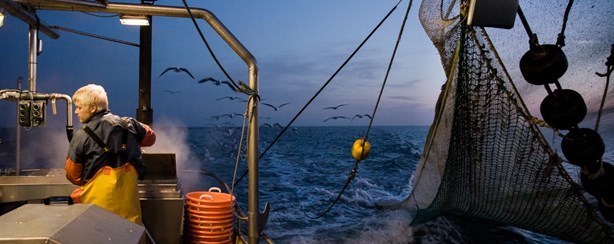Les avis du CIEM concernant les quotas de 2016 de la Mer du Nord recommandent une augmentation des stocks principaux.

Le Conseil International pour l'Exploration de la Mer (CIEM) vient de publier ses recommandations de quota de capture pour le golfe de Gascogne (dont la côte ibérique), les Mers Celtiques et la Mer du Nord pour 2016. Ces chiffres, basés sur l'évaluation scientifique des stocks, montre une augmentation significative des espèces clé pour 2016 (beaucoup de stocks se sont nettement rétablis). Les données scientifiques présentaient une tendance positive à long terme de l'augmentation des populations de poisson et de la réduction de la mortalité par pêche.
The development of the North Sea cod stock is particularly noteworthy. ICES has recommended a quota increase of 15% to over 40,000 tonnes which will contribute to reaching the targeted spawning stock by 2017. Further increases are foreseen for this stock if the sustainable exploitation of recent years continues.
North Sea cod has been synonymous with overfishing in the past, allegedly being threatened with extinction. However, a range of management measures including capacity reduction and restrictive quotas led to a huge reduction in fishing pressure and we are seeing the stock rebuilding steadily as a result.
North Sea plaice has also set a new record with the spawning stock having reached nearly 900,000 tonnes. The scientific advice recommends a quota increase of 15% to a total of 213, 440 tonnes.
North Sea herring is also very strong, with stocks having reached MSY levels. ICES recommends a quota increase of 16% to 555, 086 tonnes. Haddock in the North Sea, West of Scotland and Skagerrak has been above MSY since 2008 with a 30% increase in quota recommended for 2016. Hake is above MSY levels and a 6% increase is also recommended. North Sea Megrim is also above MSY and has been increasing since 2005.
It is important to note that these positive results were achieved ahead of the second phase of the discard ban which will come into effect in January 2016. The definitive fishing quotas for these stocks are fixed in the bilateral negotiations with Norway and obtain legal force by the decision of the EU Council of Ministers in December 2015. Europêche has welcomed these recommendations for 2016 with Kathryn Stack, their Managing Director, noting the positive results: "Huge sacrifices have been made in recent years in order to achieve sustainable stock levels. Now we are seeing the results. It is important to stay on this track whilst making sure people are aware that our seas are in fact healthy and abundant."
ICES also recommended a reduction of 6% of Pollack to 75,049 tonnes. The stock is managed in a sustainable way but is prone to fluctuation from natural factors. In fact, this stock is the first to have been certified as with the sustainability label of the MSC.
Concerning hake stocks in the Greater North Sea, Celtic Seas, Northern Bay of Biscay, ICES have recommended a 6% increase in quota. However, despite a continued reduction in fishing effort year on year and a cap of +/- 15% in TAC changes[1], ICES has advised a massive 62% reduction in the Southern stock of hake (Cantabrian sea, Atlantic Iberian waters). Kathryn continued: "The sector simply cannot support such a cut in such a short space of time. The fishermen targeting this stock will suffer the consequences with no room for manoeuvre."
ENDS
For more information, please contact Daniel Voces +32 2 230 48 48 daniel.voces@europeche.org
Europêche represents the fisheries sector in Europe. Currently, the Association comprises 12 national organisations of fishing enterprises from the following 9 EU Member States: DE, DK, ES, FR, IT, MT, NL, PL, UK.
[1] Article 7 of Regulation 2166/2005: http://eur-lex.europa.eu/legal-content/EN/TXT/PDF/?uri=CELEX:32005R2166&from=GA
Sources: EUROPECHE
Tags: Nord, celtique, Golfe de Gascogne, Mer, CIEM, Possibilités de pêche, TAC, quotas